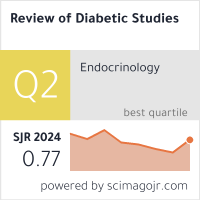Effectiveness Of Quality Indicators (E.G., TAT, Error Rates) As Tools For Continuous Improvement In Clinical Laboratories: A Systematic Review Of The Evidence
DOI:
https://doi.org/10.70082/8qr1mw26Keywords:
quality indicators, turnaround time, laboratory errors, continuous quality improvement, laboratory performance, systematic review.Abstract
Background: Quality indicators (QIs) such as turnaround time (TAT), pre- and post-analytical error rates, specimen rejection rates, and proficiency testing performance are widely used to monitor laboratory performance. However, the extent to which routinely measured QIs drive measurable, sustained improvements in laboratory quality and patient care remains unclear. Objective: To synthesize evidence on the effectiveness of QIs as tools for continuous quality improvement (CQI) in clinical laboratories, and to identify features of QI programs associated with successful outcomes. Methods: We performed a systematic search of MEDLINE, Embase, CINAHL, and Web of Science (inception to 2025) for interventional and observational studies that evaluated the impact of QI monitoring, feedback, benchmarking, or QI-driven interventions on laboratory processes or clinical outcomes. Two reviewers screened studies, extracted data, and appraised risk of bias. Due to heterogeneity in interventions and outcomes, a narrative synthesis was conducted; where possible, effect sizes were summarized. Results: Forty-two studies (mixed designs; small-to-moderate sample sizes) met inclusion criteria. Most studies reported improvements in targeted QIs following implementation of structured QI programs—common findings included reductions in TAT (median reduction 18–40% across reported studies), decreases in specimen rejection and pre-analytical error rates, and improved proficiency testing scores. Programs combining real-time QI dashboards, regular multidisciplinary feedback, root-cause analysis, and staff training produced the most consistent gains. Evidence linking QI improvements to downstream clinical outcomes (e.g., diagnostic turnaround for patient management, length of stay) was limited but suggestive in a small number of studies. Heterogeneity in indicator definitions, measurement methods, and reporting quality limited pooled quantitative analysis and generalizability. Conclusions: Monitoring and actively managing laboratory QIs appears effective for improving process measures when embedded in structured CQI frameworks that include feedback, benchmarking, and staff engagement. To strengthen the evidence base, future research should use standardized QI definitions, robust study designs, and measure clinically relevant outcomes. Implementation guidance should prioritize harmonized indicators, integrated laboratory information systems, and capacity building to sustain improvements.
Downloads
Published
Issue
Section
License

This work is licensed under a Creative Commons Attribution-ShareAlike 4.0 International License.


